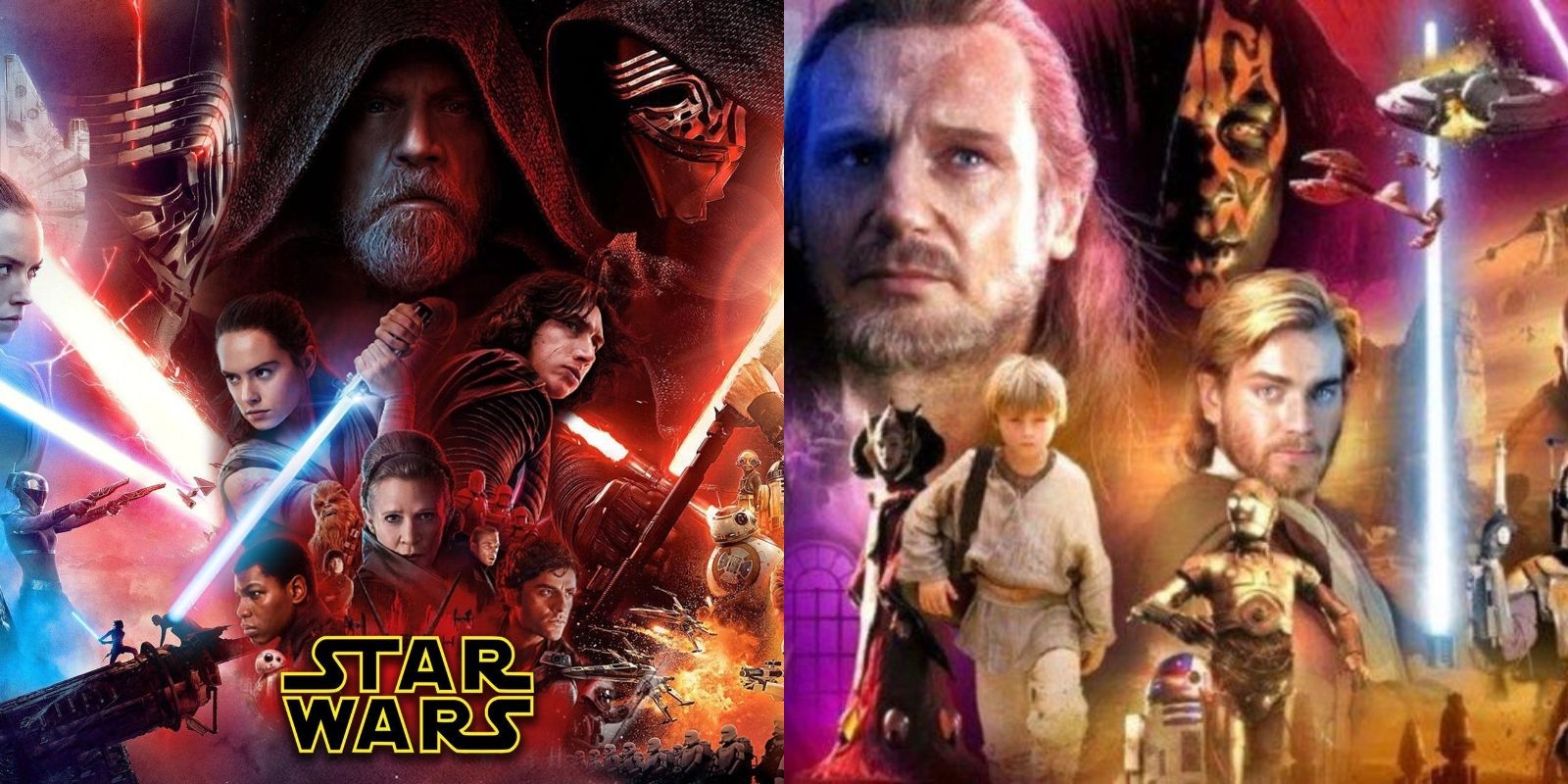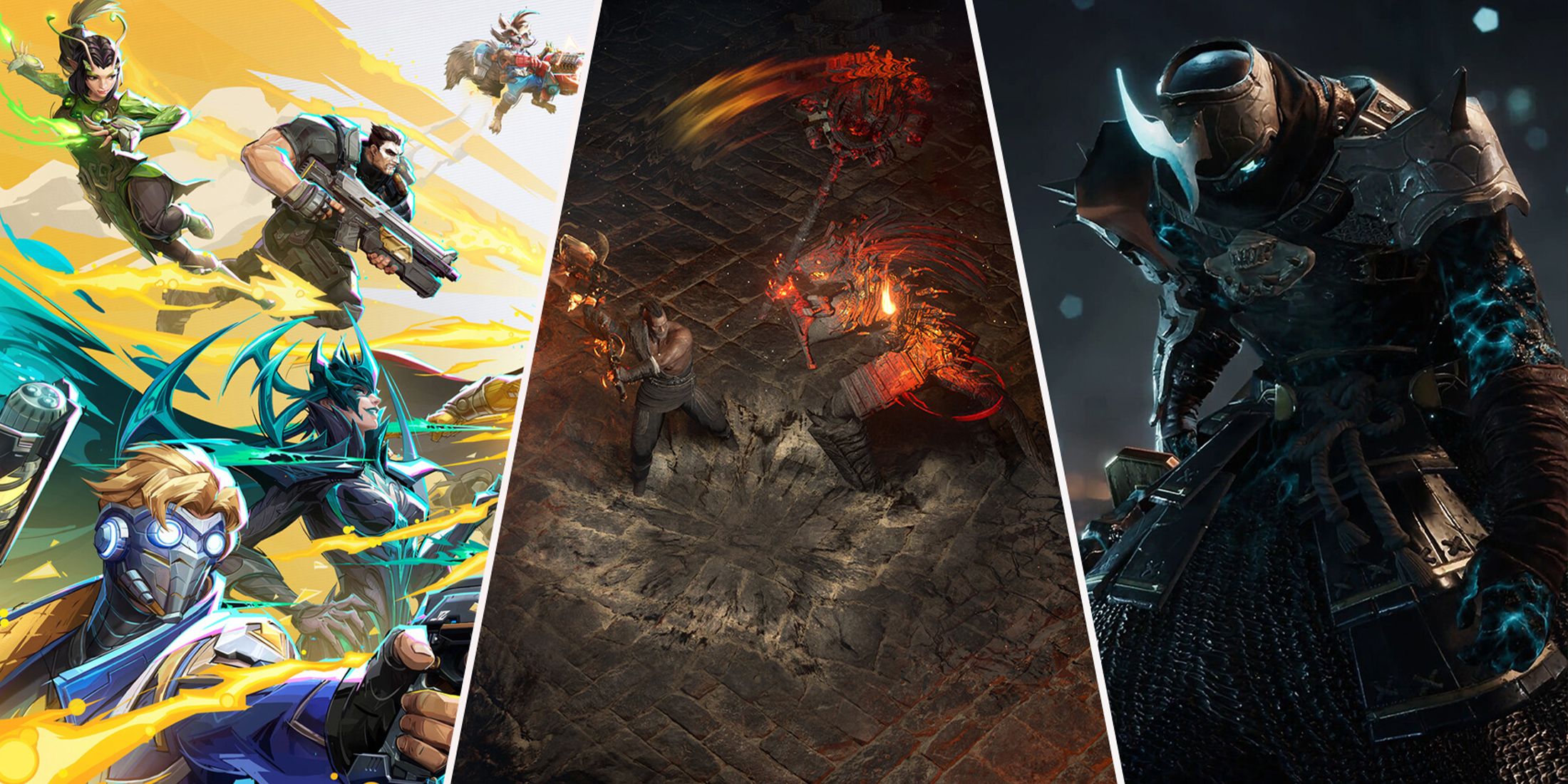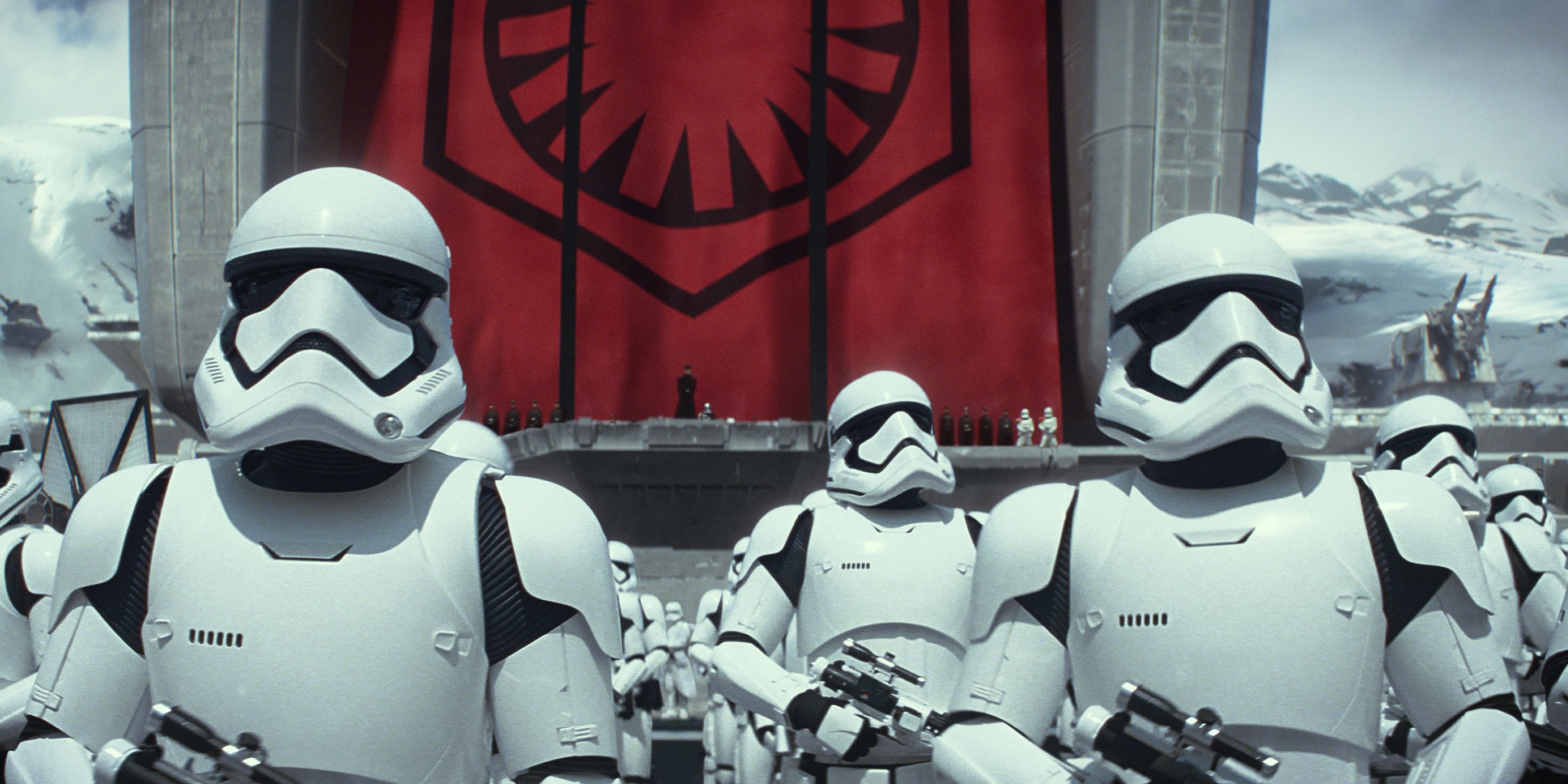Star Wars fans have the same three films in their top rankings. Empire Strikes Back takes home the gold, A New Hope holds the silver and Return of the Jedi claims the bronze. Beyond the original trilogy, fans fight over whether the prequels or sequels fumbled the source material more severely. Both sides make good points, but one fascinating microcosm of the sequel trilogy's creative dead end is its refusal to reinvent design elements.
Star Wars entered each trilogy with radically different cultural perceptions. The first outing came out of nowhere to earn tremendous sums of money and redefine the summer blockbuster. The prequels fell short of every fan's demand for more. The sequels had to erase the stain Episodes 1, 2 & 3 left on the franchise, but they carried a unique mess. After nine movies of wildly varied quality, Star Wars' next nap might be longer than usual.

Star Wars: The Sequel Trilogy Should Have Learned This Prequel Lesson
The Star Wars prequel trilogy is better than the sequel trilogy in this respect: there was a coherent plan to everything, and one single vision.
The Sequel Trilogy is set decades after Return of the Jedi
The nine Star Wars films cover only slightly more time than the period they were released in. In 42 years, from 1977 to 2019, the movies explored 68 years, from 32 BBY to 35 ABY. Consider the technological innovations over the last 42 years. The Apple II, the first commercially available computer with a color display, debuted a few weeks after the first Star Wars hit theaters. The first Chuck E. Cheese's Pizza Time Theatre opened its doors eight days after the world saw A New Hope. The hottest game in that rat-based restaurant would have been Sea Wolf, a title in which players look through a fake periscope to shoot missiles at passing ships. Everything is different. 70s technology finds itself on antique store shelves. Theoretically, Star Wars would follow a similar example in its three-decade gap.
But the technology hasn't changed.
Cutting to the chase somewhat, Disney, J. J. Abrams, and the team behind the Star Wars sequel trilogy chose to avoid deviating from the appearance of original-trilogy-era technology. The films come to the party with mostly unaltered iterations of spaceships, armor, and tech from the original trilogy. They chose to do this to maintain the franchise's look and stay as locked to the popular aesthetic as possible. The Millennium Falcon remained the most iconic vessel in The Force Awakens. The First Order borrowed more from the Empire than could have been imagined. Space-based dogfights still feature TIE Fighters, TIE Interceptors, X-Wings, A-Wings, B-Wings, and the iconic triangular Star Destroyer, among others. New ships appear occasionally, but the lion's share of Star Wars soldiers show up to battle with slight stylistic improvements on classic designs.
Ditto the fashion choices of the First Order and Resistance soldiers. The former look like old-fashioned Stormtroopers with more angular helmets. The latter pilots wear the familiar orange jumpsuit with white vests. Costume designer Michael Kaplan seemed to aim as close as possible to the example of the original series. This choice renders the sequel trilogy aesthetically comparable to the first three films. Star Wars was a brand at that point. The prequels brought on dark days, which encouraged Disney to flee back to the safety of iconography. For all the mistakes made in the Star Wars prequels, overreliance on iconography was not high on the list.
The prequels had distinct ships and tech
Anyone who has ever played a Battlefront game can speak to the differences between eras. The prequels feature a conflict between the CIS and the Republic. The Light Side/Dark Side battle remains consistent across trilogies. While the original trilogy and sequels feature humans in similar outfits fighting stormtroopers, the prequels found clones adopting a heroic role while the villains raised a new army. Clone troopers look like stormtroopers with some distinct updates, many notably more iconic than First Order armor. Conversely, the separatists introduced droids, an entirely new force with several memorable designs. Ships also enjoyed a degree of novelty. Naboo's unique looks were unlike anything in the original trilogy. These changes reflect altered technology in the 30-year gap between Episodes III and IV. While the choice may have prioritized toys, it contributed to a better aesthetic.
If Disney ever creates a fourth Star Wars trilogy, it can learn much from the prequels. Most of the trilogy's lessons are about what not to do, but the rare right choice sticks out. Star Wars has to innovate despite Disney's risk-averse retreat to the familiar. Writers can create endless narrative excuses to keep design work to a minimum. Refusing to update or reinvent necessary visual elements like spaceships and soldiers serves a purpose, but that goal is misguided. They want Star Wars to have a default style that brands anything they release with the franchise's logo despite quality, tone, or theme. The prequels alone boldly deviated from that requirement and found visual stylistic choices to carve out a distinct identity. Future outings must do the same.



